
It is hard to believe that ‘This Week At Angama’ started 100 weeks ago.
This Friday blog was launched to celebrate, through beautiful photography, the year-round diversity of this remarkable reserve. We also hoped that by publishing a weekly review, our guests could follow in real-time what was happening to their favourite characters in the Mara Triangle. With this honesty in mind, we held fast to only showing images taken within seven days of publication. For 99 weeks we religiously stuck to this and it is only in this centenary edition that we break this rule.
We have shared almost 3 000 photographs in this blog series. To date, eight photographers have contributed and we believe we have curated an extraordinary archive of Mara Triangle imagery that proves that, regardless of when you come to the Mara, you have the opportunity of experiencing great wildlife viewing.
To celebrate our 100th edition, we decided to select our ‘Top 35’ photographs. Not always the most technically beautiful, but the most memorable showcasing the immense diversity of the reserve.
I allowed myself a maximum of one shot from each week. This was a tough task as some weeks contained spectacular shots. From the best 99, my next challenge was to reduce this down to 35. I am proud of our collection and hope that you enjoy this celebratory edition of This Week At Angama 100.
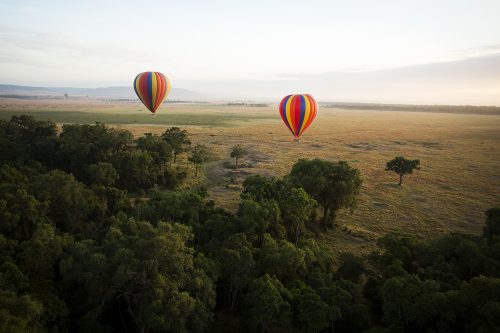

Hot air ballooning is an integral part of the Mara landscape. There can be few more beautiful ways to experience the ecosystem than to float above it. Looking directly down on the Mara River from a balloon allows you to get a better understanding of the river and the riverine forests that line this meandering watercourse, the life-blood of the reserve.
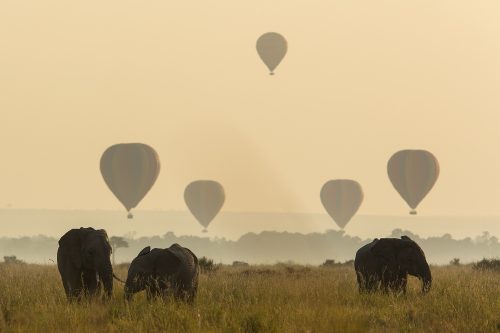
Taken in the early morning of mid-July 2018, this image has become somewhat of an iconic photograph and I can proudly say that it is mounted on a number of billboards in Nairobi, alerting its citizens to the natural beauty of the Mara that sits on their doorstep.
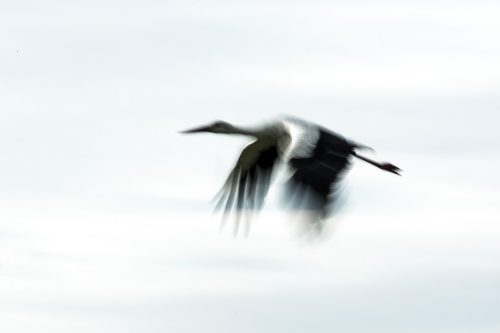
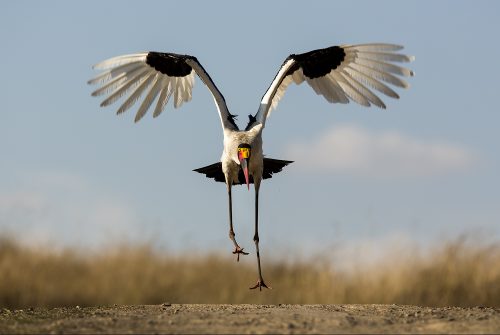
One of the joys of photography is that it allows self-expression and creativity. By slowing the shutter speed of the camera and panning I was able to show movement of this white stork. The low angle of the second images gives a shallow depth of field, when combined with the symmetry of the subject, it becomes a memorable image.
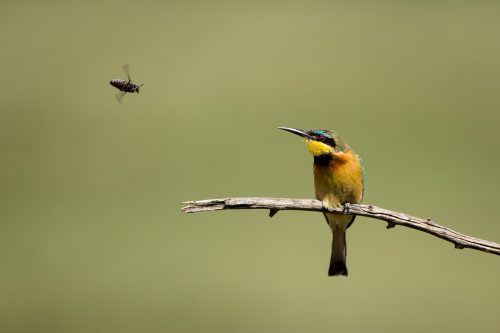
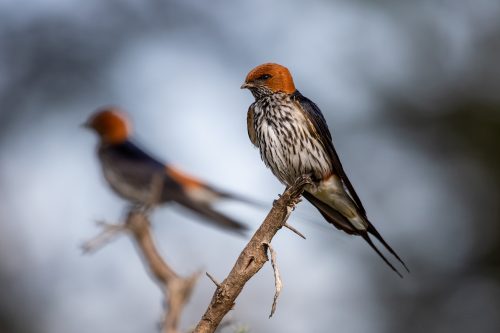
The first image above is a magical moment captured between bee and bee-eater. The bird had made a couple of unsuccessful attempts to catch this bee, each time pulling out of the chase. It was clear that the bee was just too big. Eventually the bee flew directly at the bird and the matter was settled. The above photograph of a pair of lesser striped swallows captured by Tyler is one of the most memorable bird images from this series. Rich colours, a very shallow depth of field and fantastic composition make for a simple shot of a bird which is normally flying so high and so fast, that we don’t often get to appreciate its details and elegance.
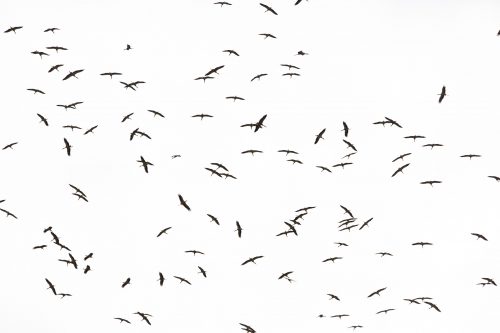

The concept of ‘migration’ in the Mara is usually associated with zebra and wildebeest. I hope that this image highlights that there are many bird species that also use the Mara as a migratory route.
Fire is a terrifying yet natural part of the landscape. Each year the Mara Triangle management lights controlled fires to burn off moribund vegetation to promote new growth. It is at this stage when birds congregate to feed on insects and rodents fleeing the burning grass. It is a tremendous sight. By positioning myself between the fire and the feeding storks I was able to capture the heat resulting in an image that looks like an oil painting.
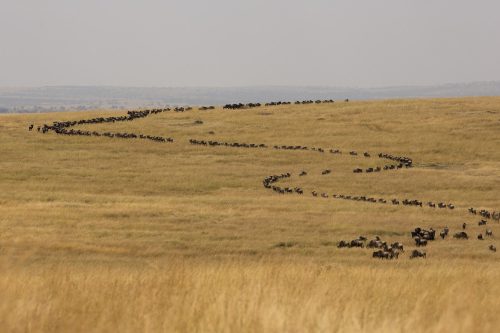
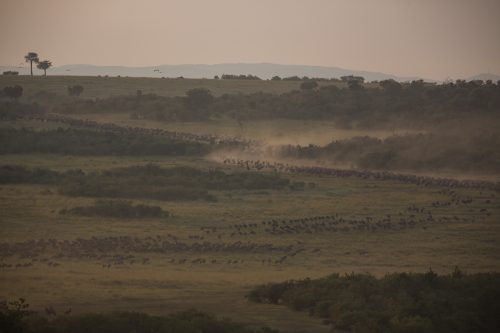
The Great Migration is without a doubt one of the most dramatic events in the natural world. Approximately 1.5 million animals disperse across the landscape, prompted by rains and encouraged by the prospect of greener pastures. As much as we all love the thrilling river crossings and frenzies of crocodiles and dust, for me it is the groupings of animals which is most appealing. In these images, I love how the wildebeest move in single-file across the golden plains.
There is a sense of urgency in the second photograph as thousands of wildebeest pour down the slopes towards the Mara River (out of frame in the foreground). The dust exacerbates the movement and the golden light creates a wonderful image. Contrary to what we are often told, that crossings only happen in the heat of the day, there are times when the animals also cross in the early cooler hours.
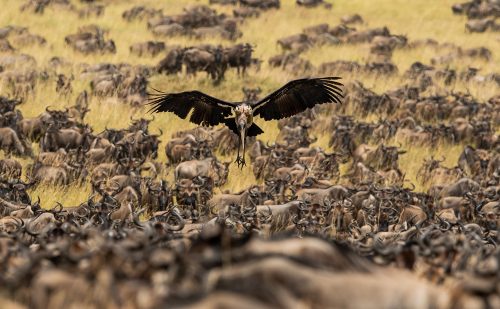
Scavengers such as this marabou stork thrive during the migration. This species is nicknamed the ‘undertaker’ of the bird world. This photograph by Graham Wood is tremendous as it suggests that death is descending on the mayhem of the herd.
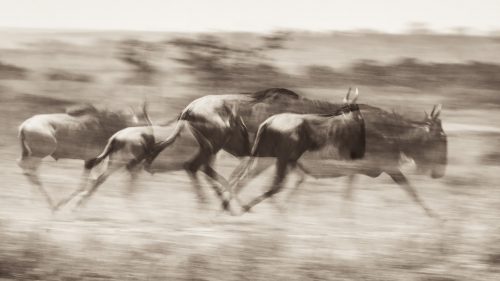
After taking what feels like thousands of pictures of wildebeest running, you start to look for creative ways to show a familiar scene. I started working on a technique called ‘double exposure panning’ which involves taking two very slow photos, moving with the animals and combining these ‘in-camera’. The sepia conversion in the post-processing gives the above image above a timeless feel.
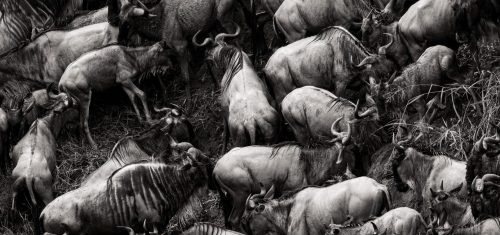

There is always an element of chaos when it comes to the migration and although it is very obvious to the eye, it is actually difficult to capture in a still image. The above images go a long way in showing the massing and the confusion that arises at this time of the year.
As a photographer, I am always on the lookout for something that looks out of place. An isolated zebra in amongst a giant herd of wildebeest immediately grabs your attention.
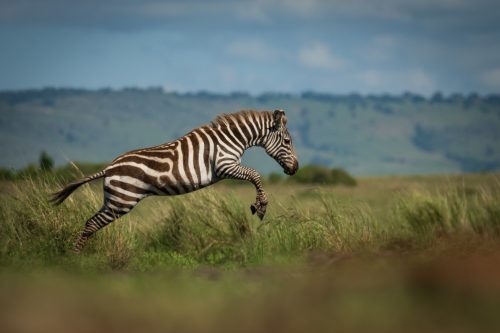

Leaping into the new year. This first photograph above of a zebra in full spring mode was taken as the sun set on 2018. It seems fitting to include it here as we embark on a new decade. It is a wild life in the Maasai Mara and some sightings are painful to witness. Having the composure to remain calm enough to capture images such as this is not always easy.

Our 99th edition produced one of the most dramatic sightings of the last two years with a crocodile winning a tug-of-war battle with a lioness on the rocky banks of the Mara River. Jeff was lucky to be there to capture it.

The Ol Donya Paek male has cemented his place in the lion chronicles of the Mara as he continues to dominate the south-western portions of the Triangle.

A giraffe gave birth in the forested slopes below Angama whilst nearby a small pride of lions lay in waiting. Drama unfolded as the lionesses followed the mother and calf for hours in an attempt to exhaust the baby. The mother fought bravely to protect her new-born, kicking and stamping whenever the lions came close. At one stage she even kicked her own baby, knocking it to the ground. After a marathon five hours the mother’s courage conquered and she led her baby to safety in a herd of vigilant and protective giraffe.
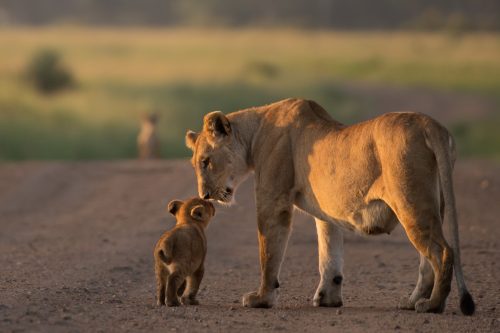
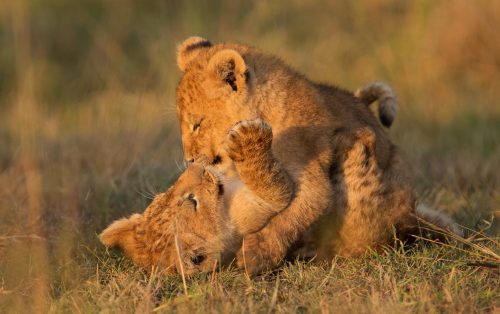
The Angama Pride have had a rather torrid year. At one stage this pride was over 15 members strong. Many of these lions, however, were sub-adult males and they have been forced out, leaving the pride depleted. But prides are resilient and always prepared to rebuild. A tender moment above between mother and cub is captured here in the golden early morning hours.
There are few sights more delightful than watching cubs at play. A lioness from the River Pride recently gave birth to four cubs, losing one quite soon afterwards. Since then, she has been vigilant and very protective of her remaining litter. In the second image an early morning game drive to one of her favoured den-sites yielded spectacular results.

He is without a doubt Africa’s most famous living lion. Scar. Just the mention of his name brings excitement rushing through one’s veins. Age is catching up and who knows in how many more posts he will feature?
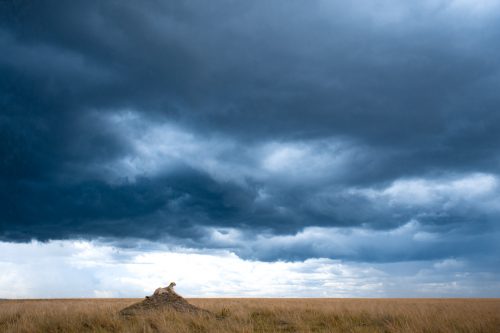

The Mara grasslands are the perfect habitat for cheetah and on the right day, the Mara skies are a sight of absolute beauty. Once in a while, the elements come together to create a perfect canvas.
The famous Border Brothers have provided the lion’s share of cheetah sightings over the last few years. These two males, in their prime, live on the border between Kenya and Tanzania, covering huge distances in search of their next meal. Here, the backdrop of the Oloololo Escarpment provides context and adds a delicate blue shade.
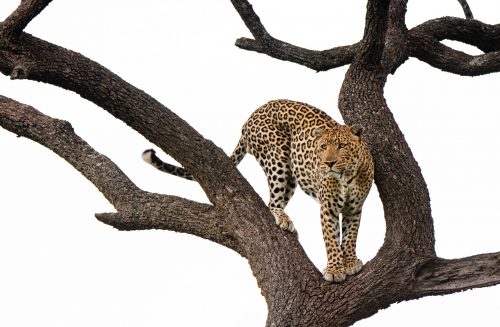
Over the past two years, much work has been done on understanding leopard dynamics in the Mara Triangle. We estimate 25-30 individuals use the 510 square kilometres of the Mara Conservancy. This leopard, affectionately known as The Shepard Tree Male, is without a doubt the star of the show.

The elephant population in the Mara is incredibly healthy, thanks largely to the great work of organisations such as the Mara Conservancy, Anne K. Taylor Fund and Mara Elephant Project. A low angle, a dramatic sky and a black and white conversion go a long way to showcase this clash of the titans.

Breaking the traditional rules of photography, an extremely slow shutter speed goes a long way to capture drama and movement.
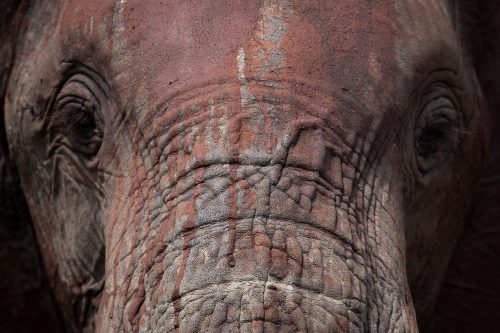
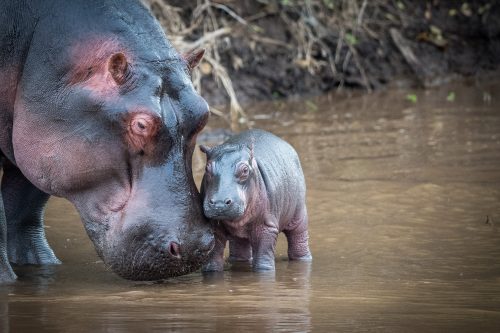
This close-up of a large elephant cow coated in mud resembles textured warpaint. An intimate moment between newborn and mother results in one of the sweetest hippo photos I have ever seen.
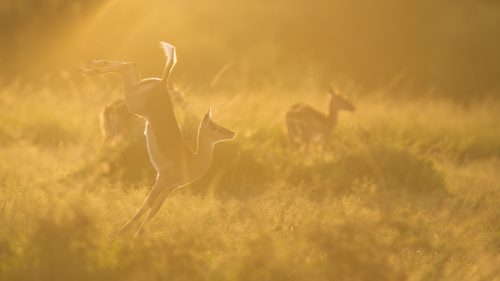
Whereas many captivating images allow the viewer to see the drama, pain and anguish of wildlife, this photograph of an impala in the early morning light portrays the other side of the spectrum – fun, joy and freedom.
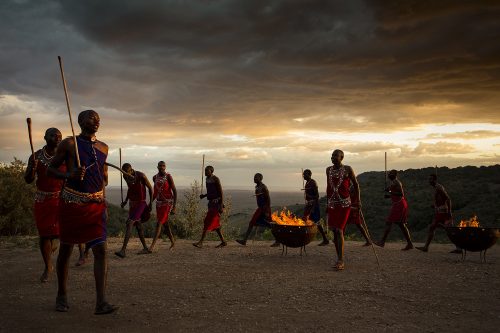

Maasai warriors perform their ancestral chants and dances against a sky exploding with colour. Gathering around a fire is the perfect end to a great day on safari with an ice cold Tusker or dawa in hand and the warm sun sinking below the escarpment. In the second Tim Hulme captured the joy and elation of a circumcision ceremony in a nearby Maasai village.
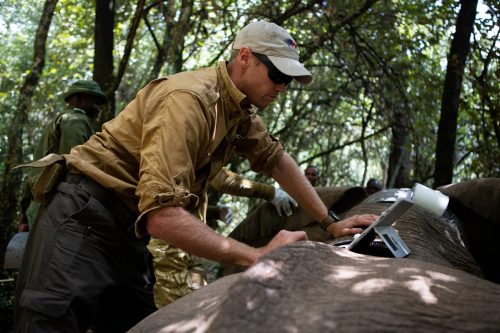
Angama Mara is more than just a lovely lodge on the edge of the escarpment. We are determined that our presence here greatly benefits our neighbouring community, landscape and wildlife. One of the roles of this blog series has been to showcase the courageous and hardworking organisations that are committed to protecting and serving this landscape. Here Dr Jake Wall of the Mara Elephant Project checks the heart-rate of an elephant he has just fitted with a tracking collar. Their work is making huge inroads to reduce human/wildlife conflict and Angama Mara is a proud partner in their selfless undertakings.
Filed under: This Week at Angama
Subscribe for Weekly Stories
Comments (0):
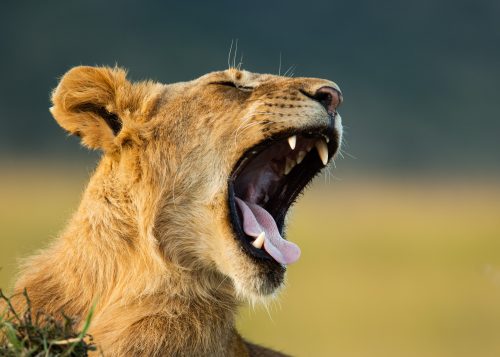
Angama Safari Offers